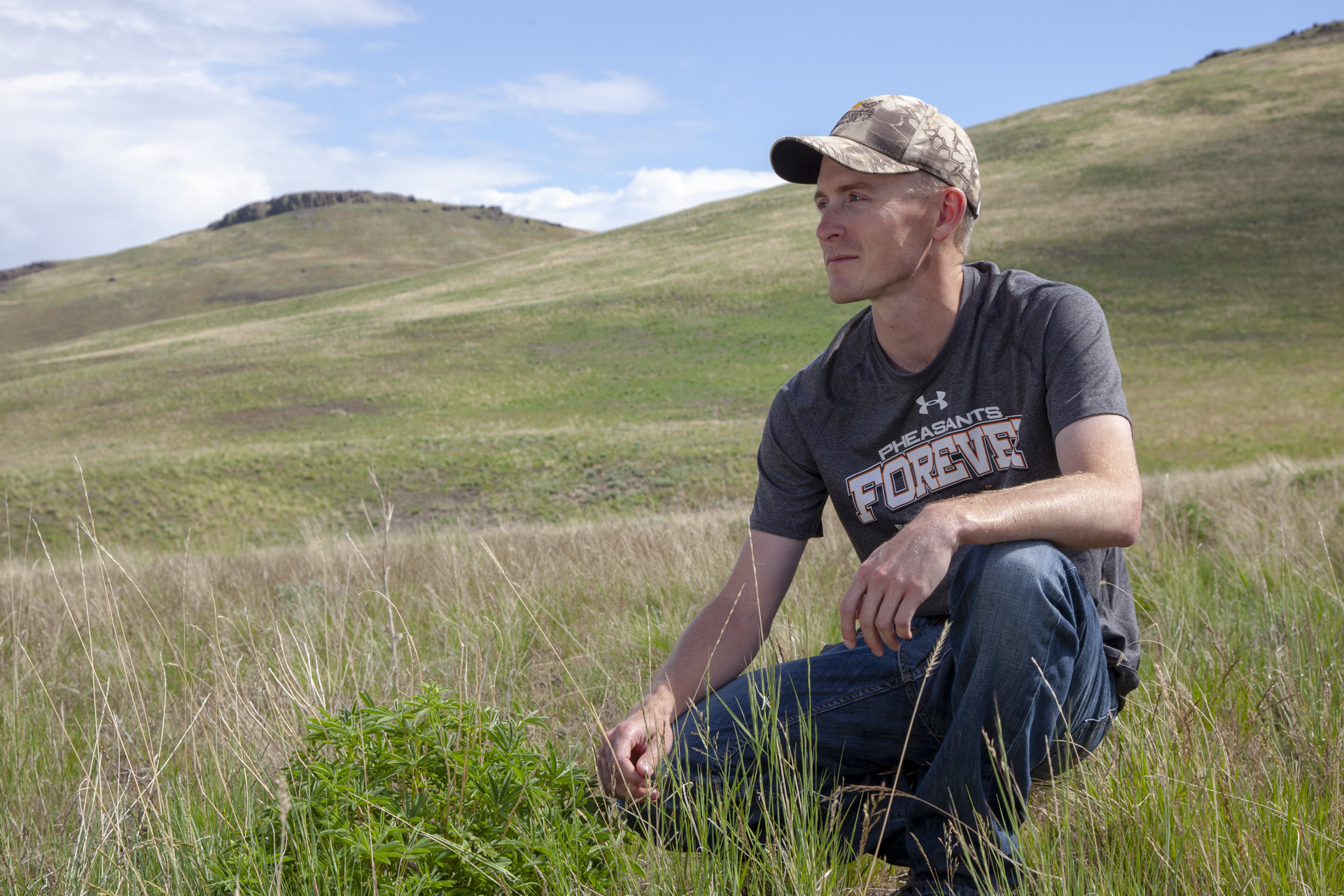Crossing Boundaries
Conifer removal projects in Idaho model successful partnership work across land ownerships.
The follow article is contributed by Connor White, a partner biologist with the NRCS-led Sage Grouse Initiative and Pheasants Forever. Due to his cross-boundary work on both private and public lands, his position is supported in part by the Partnering to Conserve Sagebrush Rangelands effort between the Bureau of Land Management and Intermountain West Joint Venture.
Photo of juniper removal by Connor White
Every invading juniper tree in sagebrush country acts like a giant straw in the ground, robbing arid rangeland habitats of precious water. A single juniper can suck up to 30 gallons of water a day. This in turn robs the range of native plants—in severely tree-invaded landscapes, only bare dirt remains beneath trees, leaving entire landscapes devoid of sagebrush, grasses, and wildflowers, things that wildlife and livestock need to survive. This juniper invasion has marched across the West, but impressive partnerships are forming to cut them back where they don’t belong.
In 2010, the Bureau of Land Management (BLM) Burley Field Office in Idaho wrote an Environmental Assessment with a lofty goal of treating nearly 40,000 acres of their managed lands for juniper removal over the next ten years. The BLM initially anticipated doing this huge project alone, but new and old partners joined them to begin developing an innovative model that today has made their cross-boundary collaborative conservation a landscape-level success story.
At the sage grouse local working group meetings the Natural Resource Conservation Service (NRCS) began discussions with the BLM to brainstorm how they might be able to provide financial assistance to complete the projects. Around the same time, Pheasants Forever had just emerged as a significant partner in western sagebrush conservation efforts with NRCS. Pheasants Forever was the employing entity for a handful of NRCS Sage Grouse Initiative (SGI) partner biologist positions, like myself. Local partners soon realized that Pheasants Forever could make the contracting process much less of a burden, allowing more time for getting the work done on the ground.
Hillside of freshly cut conifers. Photo by Connor White.
With the financial partnership and manpower support of the BLM’s fuels program, Pheasants Forever began the juniper removal project work by hiring and directing contractors to start cutting trees on the designated public land treatment units. At the same time, NRCS field staff were signing up public land grazing permittee holders to provide financial assistance through the Farm Bill. This funding allowed the Pheasants Forever contractor to complete the conifer removal across adjacent private acres, too.
With this model, the stage was set for a seriously scale up project work, which is exactly what happened. Through the next several years, additional partners jumped onboard, providing additional funds to treat conifer encroachment on adjacent state and private lands. These other partners included Idaho Department of Fish and Game, Idaho Department of Lands, and the Governor’s Office of Species Conservation.
Conifer removal work quickly ballooned to treating 5,000 acres per year from 2014-2017, as outlined in BLM's Environmental Assessment. This project was completed three years earlier than planned! The end result: Nearly 30,000 acres of rangeland was restored across federal, state, and private lands.
The partnership effort has been a great success for us. No single entity could have accomplished so much alone. But if it sounds like we are tying a bow on the project and walking away, that is far from the truth. With one large cross-boundary project now completed, we are starting to revisit the first of the conifer cuts to do maintenance work. This ensures the treatment is effective well into the future, by removing any new trees that may have sprouted and cutting off any limbs missed during the initial treatment.
Noticing the success on the BLM side of the fence, the Sawtooth National Forest’s Minidoka Ranger District is also taking new actions to help sage grouse. They are looking to use the same collaborative model that proved successful during the BLM project.
Photo of Connor White by Evan Barrientos
I consider my partnership-funded position as a bit of glue that keeps all of the partners coordinated and informed—my role is to help keep projects moving smoothly. We hold tours of the conservation work every other year or so, or as requested. This lets everyone involved to see first-hand the most recent projects, and to see results of some of the first cuts, now several years old.
With a significant milestone behind us with completion of the first Environmental Assessment, the partnership is optimistic that the same collaborative energy and on-the-ground effectiveness can be carried onward for years to come to benefit working lands and wildlife across boundaries.


